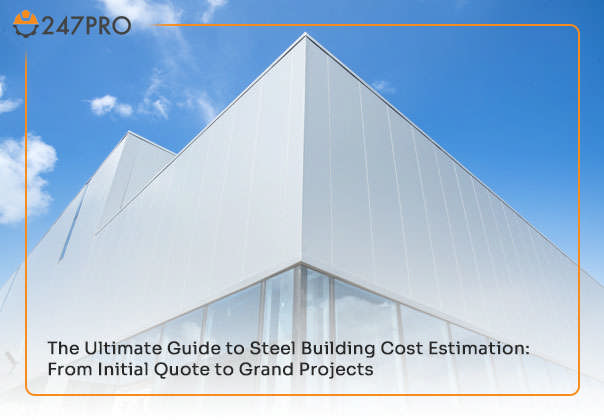Financial Loss in Construction Projects
In the ever-changing and mainly unpredictable world of construction, accurate estimation is the backbone of a successful construction project; it is the key to sound project management, realistic budgeting, and facing minimal risk. Underestimating the project cost can have negative consequences, resulting in significant financial losses, project delays, and even the complete abandonment of the project.
In this text, we will discuss common challenges in cost estimation, the financial consequences of miscalculations, and the implications of miscalculations, and provide effective construction budgeting strategies for accurate cost estimates and to avoid costly errors.
Common Challenges in Cost Estimation
Achieving a precise estimate in construction projects is a complex but achievable process that involves many factors to be considered. The unpredictability of the construction environment, together with external and often unforeseen factors, usually complicates the efforts. Recognising these prone-to-error challenges is the first step in having an accurate estimation. These key challenges include:
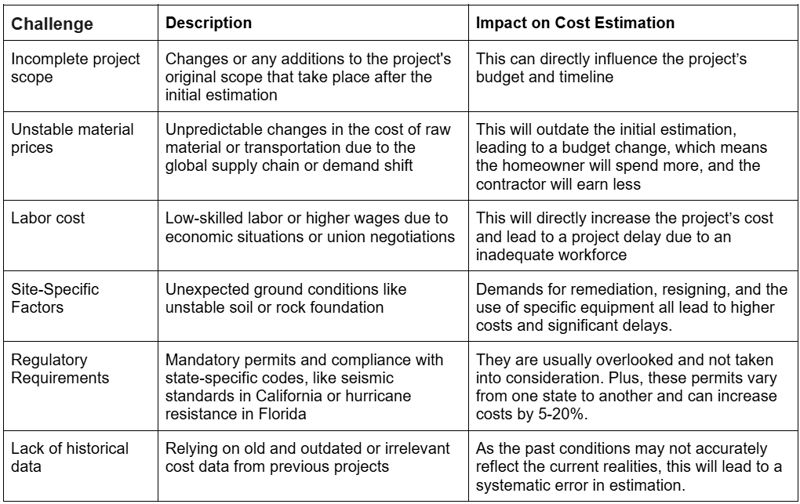
Financial Consequences of Underestimating Costs
Underestimating cost can lead to severe financial challenges and jeopardize the whole project. These minor consequences can turn into a significant financial crisis, impacting project viability and the client’s trust.
- Budget overruns: The most tangible consequences of miscalculation are unexpected expenses, leading to project stalls or additional funding requirements. For example, if a 1,000-square-foot steel project is estimated to cost $80,000, it might exceed $110,000 due to unaccounted seismic reinforcements.
- Delayed Project Timelines: A financial crisis can delay milestones, leading to penalties, such as $500 per day or extended equipment rental costs.
- Compromised quality: Some contractors, in an effort to stay within budget, may cut corners and use lower-quality materials for the project. Risking the whole project’s quality and integrity
- Escalating Legal Disputes and Litigation: Cost overruns can increase disputes and disagreements, as well as contractual interpretations, leading to costly legal battles that may cost $10,000 to $50,000 and further postpone project completion.
- Lost opportunities: A record of cost overruns and failure to complete the project on time can ruin your reputation. A bad reputation can limit investment in other projects, thereby reducing opportunities for future endeavors.
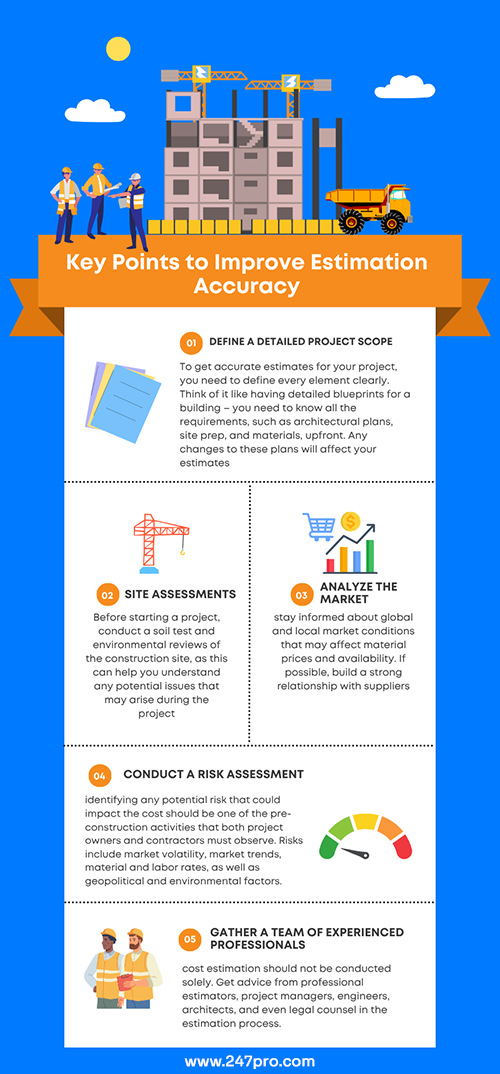
Key Points to Improve Estimation Accuracy
To improve the accuracy of cost estimation, it is crucial to understand the risk of understating costs, develop strategies to overcome these risks, and utilize technology. Here are some fundamental strategies to enhance precise estimation.
- Define a detailed project scope: It is essential to clearly define all project elements. Ambiguity is the enemy of accurate estimation. Before you embark on the estimation, you need to have a crystal clear picture of every project requirement, like detailed architectural plans, site preparation needs, material specifications, and clear definitions of expectations. Any changes in this scope must be taken into consideration.
- Conduct a risk assessment: identifying any potential risk that could impact the cost should be one of the pre-construction activities that both project owners and contractors must observe. Risks include market volatility, market trends, material and labor rates, as well as geopolitical and environmental factors.
- Gather a team of experienced professionals: cost estimation should not be conducted solely. Get advice from professional estimators, project managers, engineers, architects, and even legal counsel in the estimation process.
- Analyze the market: stay informed about global and local market conditions that may affect material prices and availability. If possible, build a strong relationship with suppliers.
- Site assessments: Before starting a project, conduct a soil test and environmental reviews of the construction site, as this can help you understand any potential issues that may arise during the project.
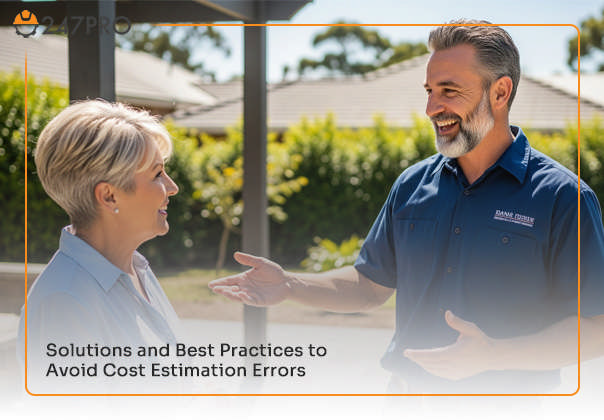
Solutions and Best Practices to Avoid Cost Estimation Errors
Implementing strategies and adopting best practices across the project are crucial to prevent costly miscalculations and ensure project success and financial stability in construction.
- Use related software: Monitor the project constantly in any phase; this will help you detect any off-budget costs. Using tools like construction project tracking software or construction management software can be of great help.
- Develop a cost breakdown: By creating a detailed table of the estimated costs for each phase of the project. For example, below is a sample cost breakdown for a 1,000-square-foot steel building:
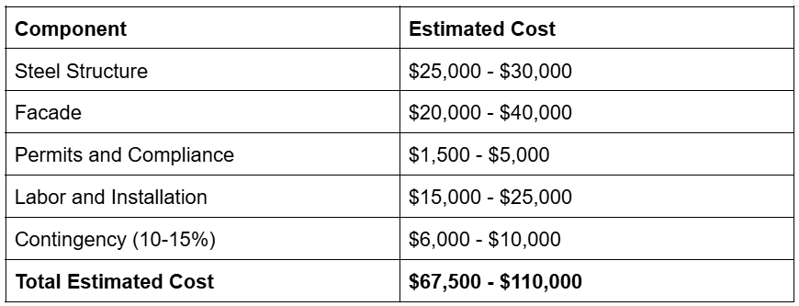
- Use a cost calculator for accurate estimation: Although an online home construction cost calculator is not as precise as a detailed and professional estimate, it provides valuable insight for construction projects, helping homeowners and contractors understand general cost parameters early on.
- Communicate constantly: clear, honest communication among clients, contractors, subcontractors, suppliers, and internal teams can prevent any issue. Misunderstanding and poor communication can lead to significant financial crises and delays. Regular meetings and clear documentation can facilitate this.
- Hire qualified contractors: obtaining contractors with a good reputation and proper legal qualifications to build your project will, to a great extent, guarantee a timely and stick-to-budget completion of the project. Obtain a review of their previous project and determine whether they are a suitable fit for your project.






